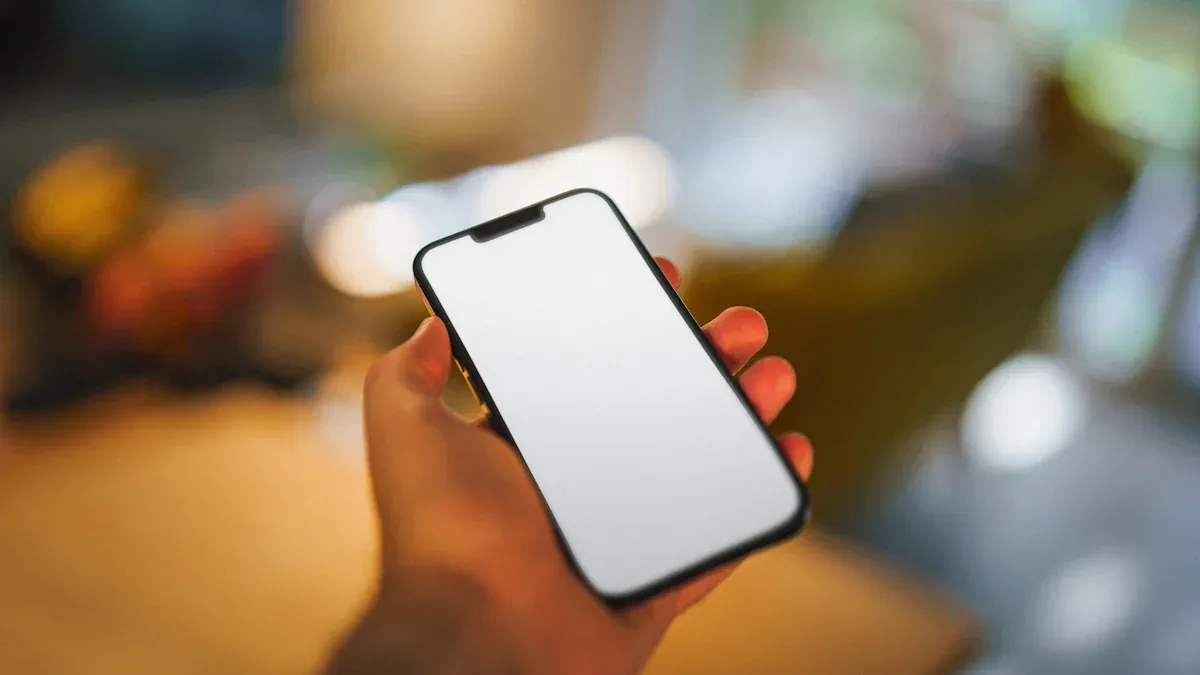
Proper maintenance of your fire fighter portable telephone handset is crucial for ensuring safety and seamless communication during emergencies. Failing to care for this vital equipment can result in malfunctions that jeopardize lives. Consistent upkeep helps your firefighter telephone handset remain dependable and durable over time. By adhering to recommended maintenance practices, you can minimize the risk of expensive repairs or replacements for your fireman telephone handset. Always prioritize the condition of your fire fighter telephone handset to ensure it performs optimally when needed.
Key Takeaways
- Taking care of your firefighter handset is very important. Check for damage and test sound to keep it working well.
- Clean it often and check the battery to make it last longer. Use safe cleaners and follow a regular schedule to avoid expensive fixes.
- Fix problems quickly to stop them from getting worse. If the sound is bad or it won’t connect, clean it and check the wires. Get expert help for hard-to-fix problems.
Why Maintenance Matters
Ensuring Reliable Communication in Emergencies
Your fire fighter portable telephone handset plays a critical role during emergencies. Reliable communication ensures that you and your team can coordinate effectively in high-pressure situations. A well-maintained handset reduces the chances of signal loss or audio issues. Regular checks help you identify potential problems before they escalate. For example, inspecting the device for wear or damage ensures it remains functional when you need it most. Always prioritize maintenance to avoid communication breakdowns during life-saving operations.
Extending the Lifespan of Firefighter Portable Telephone Handsets
Proper care extends the life of your fire fighter portable telephone handset. Routine cleaning prevents dirt and debris from damaging internal components. Battery checks ensure the device powers up without fail. By following a consistent maintenance schedule, you can keep your handset in excellent condition for years. This approach not only saves you time but also ensures the device remains dependable in critical moments.
Reducing Costs from Repairs or Replacements
Neglecting maintenance can lead to costly repairs or even the need for a replacement. Damaged components, such as broken clips or worn-out batteries, can quickly add up. Regular upkeep minimizes these risks. For instance, cleaning the handset with safe solutions prevents corrosion, which could otherwise require expensive fixes. By investing time in maintenance, you save money and ensure your equipment remains reliable.
Daily Maintenance Checklist

Inspecting for Physical Damage and Wear
Start your daily maintenance by examining the fire fighter portable telephone handset for any visible damage. Look for cracks, dents, or scratches on the casing. Check the buttons to ensure they are not stuck or loose. Pay attention to the screen (if applicable) for any signs of damage, such as scratches or discoloration. A quick inspection helps you catch issues early before they worsen.
팁: Use a flashlight to inspect hard-to-see areas, especially around ports and seams.
Checking Battery Levels and Connections
Always verify the battery level before heading out. A fully charged handset ensures uninterrupted communication during emergencies. Remove the battery cover and inspect the connections for dirt or corrosion. Clean the contacts gently if needed. If the battery drains quickly, consider replacing it to avoid sudden power loss.
Verifying Secure Attachments (Clips, Straps, etc.)
Ensure all attachments, such as clips and straps, are securely fastened. Loose or damaged attachments can cause the handset to fall or get lost during operations. Check for frayed straps or broken clips and replace them immediately. A secure handset stays within reach when you need it most.
Testing Audio Quality and Signal Strength
Test the audio quality by making a quick call or using the handset’s test function. Listen for any static or distortion. Verify the signal strength to ensure the device can maintain a stable connection. Poor audio or weak signals may indicate internal issues that require attention.
참고 : Perform these tests in different locations to ensure consistent performance.
Cleaning Guidelines

Safe Cleaning Solutions and Tools
Using the right cleaning solutions and tools ensures your fire fighter portable telephone handset remains in excellent condition. Choose non-abrasive cleaning agents, such as mild soap or alcohol-based wipes. These solutions effectively remove dirt and bacteria without damaging the device. Use soft, lint-free cloths or microfiber towels to clean the surface. For hard-to-reach areas, a small, soft-bristled brush works well. Avoid using excessive water or harsh chemicals, as they can harm the handset’s components.
팁: Always check the manufacturer’s recommendations for cleaning products to avoid voiding the warranty.
Step-by-Step Cleaning Process for Firefighter Portable Telephone Handsets
- Turn off the handset and remove the battery if possible.
- Dampen a microfiber cloth with a small amount of cleaning solution.
- Gently wipe the exterior, focusing on areas with visible dirt or grime.
- Use a soft-bristled brush to clean around buttons, ports, and seams.
- Dry the handset with a clean, dry cloth before reassembling it.
참고 : Perform this process in a well-lit area to ensure thorough cleaning.
Tools and Methods to Avoid During Cleaning
Avoid using abrasive materials like steel wool or rough sponges. These can scratch the surface of your handset. Do not spray cleaning solutions directly onto the device, as excess liquid may seep into internal components. Steer clear of compressed air cans, which can push debris further into the handset.
Cleaning Tips for Harsh or Challenging Environments
In environments with heavy soot, mud, or dust, clean your handset more frequently. Use a slightly damp cloth to remove stubborn dirt. For extreme conditions, consider using protective covers to shield the device from contaminants. Regular cleaning prevents buildup that could interfere with performance.
Reminder: Always inspect the handset after cleaning to ensure no residue remains.
Troubleshooting Common Issues
Identifying and Addressing Damaged Components
Inspect your fire fighter portable telephone handset regularly for damaged parts. Cracks, loose buttons, or broken clips can affect its performance. If you notice any issues, replace the damaged components immediately. For example, a cracked screen may impact visibility, while a loose button could hinder functionality. Keep spare parts, such as clips or straps, on hand for quick fixes.
팁: Use a magnifying glass to check for small cracks or wear that might not be visible to the naked eye.
Resolving Poor Audio Quality or Signal Issues
Poor audio quality or weak signals can disrupt communication. Start by cleaning the microphone and speaker openings to remove dirt or debris. Test the handset in different locations to rule out environmental interference. If the problem persists, check the antenna for damage or misalignment. Replacing a faulty antenna often resolves signal issues.
참고 : Avoid using the handset near large metal objects or in areas with heavy radio interference, as these can weaken the signal.
Fixing Connectivity Problems
Connectivity problems often stem from loose or dirty connectors. Inspect the battery contacts and charging port for dirt or corrosion. Clean them gently with a soft cloth or an alcohol wipe. Ensure the battery is seated correctly and securely. If the handset still fails to connect, update its firmware or reset it to factory settings.
Reminder: Always back up important settings or data before performing a factory reset.
Knowing When to Seek Professional Repairs
Some issues require professional attention. If the handset fails to power on, overheats, or shows signs of internal damage, consult a certified technician. Attempting to fix complex problems yourself may void the warranty or worsen the damage. Trust professionals to handle repairs that involve internal circuitry or software malfunctions.
Callout: Regular maintenance reduces the likelihood of needing professional repairs, saving you time and money.
Regular maintenance of your fire fighter portable telephone handset ensures it stays reliable and safe during emergencies. Following these steps improves performance, extends the device’s lifespan, and reduces repair costs. Make these practices part of your routine. By doing so, you guarantee your handset remains ready when you need it most.
제품 정보
How often should you clean your firefighter portable handset?
You should clean your handset weekly or after exposure to dirt, soot, or moisture. Regular cleaning ensures optimal performance and prevents damage from debris buildup.
팁: In harsh environments, clean the device more frequently to maintain reliability.
Can you use household cleaners on the handset?
Avoid household cleaners. Use mild soap or alcohol-based wipes recommended by the manufacturer. Harsh chemicals can damage the handset’s components or void its warranty.
What should you do if the handset stops working during an emergency?
Switch to a backup device immediately. Afterward, inspect the faulty handset for damage or battery issues. Seek professional repairs if the problem persists.
Reminder: Always carry a backup handset for emergencies.


